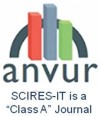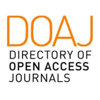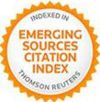Abstract
Recent developments in the technologies of reproducibility have made it possible to experience visits to heritage sites and artifacts at a distance. These reproductions imply a rearrangement of the space of reception of heritage. This phenomenon can be called relocation. We shall argue that it is a common element to the processes of “patrimonialization” and “mechanical reproducibility”. Making-heritage implies a rearrangement of the space around an artifact, this rearrangement also takes place during its mechanical reproduction. In this paper we will discuss some forms of relocations of heritage and see how these phenomena have always been at the heart of practices of valorization of traces of the past. The analysis of a case of virtual reconstitution of an archaeological site will help reveal some of the current trends in this field.
Full Text:
PDFDOI: http://dx.doi.org/10.2423/i22394303v11n1p45
References
Baujard, C. (2019). Environnement numérique et musées. Les Cahiers du numérique, 1(1-2), 9-18.
Benjamin, W. (1939). L’œuvre d’art à l’époque de sa reproductibilité technique, in Œuvres n. III, Paris: Gallimard.
Bachimont, B. (2021). Archive et mémoire. Le numérique et les mnémophores, in M.G. Dondero, A. Fickers, G.M. Tore, M. Treleani, (Eds.) Sémiotiques de l’archive, Liège: Presses de l’Université de Liège.
Bachimont, B. (2000). L’archive numérique: entre authenticité et interprétabilité, Archives, 32(1), 3-15.
Bolter, J-D., & Grusin, R. (1999). Remediation. Understanding New Media, Cambridge, Mass: MIT Press.
Buchli, V. (2009). La Culture matérielle, la numérisation et le problème de l’artéfact. Techniques & Culture. 52-53, 212-231.
Casetti, F. (2015). The Lumière Galaxy. New York: Columbia University Press.
Davallon, J. (2016). Penser le patrimoine selon une perspective communicationnelle, Sciences de la société, 99, 15-29.
Derrida, J. (1996). Le mal d’archive, Paris: Editions Galilée.
Duranti, L. (1995). Reliability and Authenticity: The Concepts and Their Implications. Archivaria, 39.
Gillot, L., Maffi, I., & Trémon, A.C. (2013). “Heritage-scape” or “Heritage-scapes”? Critical Considerations on a Concept. Ethnologies, 35 (2), 3-29.
Enhuber, M. (2015). Art, space and technology: How the digitisation and digitalisation of art space affect the consumption of art—A critical approach. Digital Creativity, 26(2), 121-137.
Gawin, G. (2019). Vers un patrimoine de médiations interpersonnelles: Cas de la restitution en musée par une tablette de la présence d’un ancien résistant. Les Cahiers du numérique, 1(1-2), 93-117.
Latour, B., & Lowe, A. (2011). La migration de l’aura ou comment explorer un original par le biais de ses fac-similé. Intermédialités / Intermediality, 17, 173–191.
Miège, B. (2017). Les industries culturelles et créatives face à l’ordre de l’information et de la communication, Grenoble: PUG.
Pomian, K. (1999). Sur l’histoire, Paris: Gallimard.
Pomian, K. (1990). Musées et patrimoine, in H.P. Jeudy (Ed.), Patrimoine en folies, Paris: Éditions de la Maison des Sciences de l’homme.
Sobieszczanski, M. (2015). Les Médias immersifs informatisés. Raisons cognitives de la ré-analogisation. Berne: Peter Lang.
Treleani, M. (2017). Qu’est-ce que le patrimoine numérique? Une sémiologie de la circulation des archives, Lormont: Le Bord de l’Eau.
Treleani, M., & Zucconi F. (2020). Editorial: Remediating Distances, Img Journal, 05, 6-21
Zucconi, F. (2018). Displacing Caravaggio. Art, Media and Humanitarian Visual Culture. Cham: Palgrave Mcmillan.
Article Metrics
Metrics powered by PLOS ALM
Refbacks
- There are currently no refbacks.
Copyright (c) 2021 Matteo Treleani

This work is licensed under a Creative Commons Attribution-NonCommercial-NoDerivatives 4.0 International License.
SCIRES-IT, e-ISSN 2239-4303
Journal founded by Virginia Valzano





